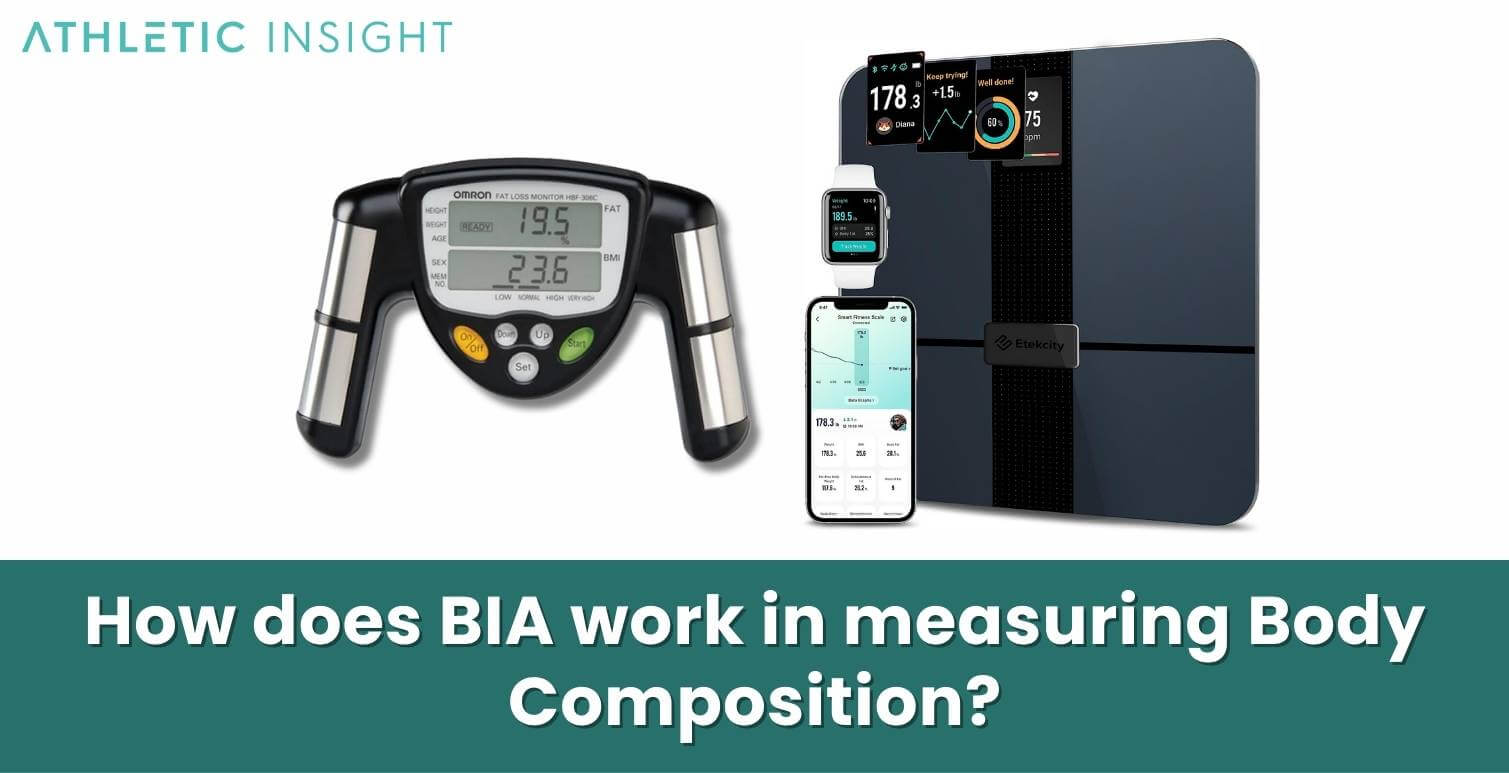Bioelectrical Impedance Analysis, often abbreviated to BIA, represents a pivotal approach in the study and understanding of the human body’s composition. It provides valuable insights about one’s health and fitness, aiding in the formulation of personalized health strategies. This article will expound on the concept of BIA, its significance, and its functional mechanism.
Over the succeeding sections, readers will acquire a profound comprehension of BIA, learn about the intricacies of BIA scales, and understand their role in evaluating body composition. This exploration will also clarify the procedures for conducting BIA, and elucidate upon the diverse types of BIA utilized in health and diet contexts.
What is BIA (Bioelectrical Impedance Analysis)?
So, what is bioelectrical impedance analysis? BIA is a scientific method utilized for estimating body composition, the distribution of fat and lean mass. It’s a non-invasive technique that gauges the opposition of body tissues to the flow of a low-energy electrical signal, with the term ‘bioelectrical impedance’ referring to this resistance.

Since different bodily components, fat, muscle, and water, exhibit varying levels of impedance, BIA can segregate and quantify these elements. By interpreting the electronic body fat measurement, BIA provides a comprehensive view of a person’s body composition beyond rudimentary weight measurements.
What is the purpose of BIA (Bioelectrical Impedance Analysis)?
The primary aim of BIA is to furnish an extensive understanding of body composition. It’s utilized as an essential tool by health professionals to detect early signs of health risks associated with abnormal body fat distribution and to monitor and tailor diet and exercise regimens for individuals.
BIA’s application isn’t limited to health contexts alone. It’s also applied in sports and fitness arenas to measure athletes’ body composition, assisting in crafting optimized training plans and dietary protocols. BIA’s purpose, therefore, extends from health maintenance to performance optimization.
How does BIA work in measuring Body Composition?
BIA’s operation relies on the variance in electrical conductivity across different types of body tissues. Fat, being less water-dense, provides high impedance or resistance to the electric current. In contrast, muscle, comprising a significant proportion of water, allows a smoother current passage, thus showing lower impedance.

By introducing a small, unnoticeable electric signal into the body and measuring the time it takes to travel, BIA derives impedance values for different tissue types. Analyzing these values helps estimate the percentages of fat mass and lean mass, further contributing to comprehensive body composition assessment.
How to measure Body Composition using BIA?
The process of measuring body composition with BIA involves a specialized device, typically a BIA scale. The user stands barefoot on the scale’s metal footpads, which sends a harmless electrical current through the body. The current encounters different levels of resistance as it traverses through various body tissues.
The BIA impedance scale records this resistance data and applies it to preset algorithms considering user’s age, height, gender, and physical activity level. The output is a detailed body composition report, highlighting attributes like body fat percentage, lean mass, and sometimes even hydration levels.
What are the types of BIA?
BIA can be segregated into two main types: Single-frequency BIA and Multi-frequency BIA. Single-frequency BIA utilizes one signal frequency, typically effective for estimating overall body water and thereby inferring fat-free mass. It’s frequently used in home-use scales and fitness trackers.
Multi-frequency BIA, on the other hand, employs multiple signal frequencies, allowing it to evaluate different fluid compartments within the body, intracellular and extracellular water. This enhanced precision makes it a favored choice in clinical settings, dietetic evaluations, and advanced fitness assessments.
- Single-frequency BIA
- Multi-frequency BIA
When should a BIA (Bioelectrical Impedance Analysis) be performed?
The execution of a BIA test can be crucial at several instances. Health professionals commonly recommend it for individuals initiating a weight loss program. This helps to establish a baseline of their body composition before they start, which can be instrumental in tracking progress and adjusting dietary and exercise plans.
Athletes may also undergo BIA tests to optimize their training programs based on their body composition. Additionally, regular BIA tests are advantageous in medical settings to monitor patients with conditions affecting their body composition, such as obesity or malnutrition.
Who performs BIA (Bioelectrical Impedance Analysis)?
Professional settings such as hospitals, clinics, and sports facilities often have trained staff conduct BIA tests. This includes nutritionists, dietitians, sports coaches, and fitness trainers, who are proficient in the use of BIA devices and the interpretation of the resulting data.
With the proliferation of consumer-grade BIA devices like smart scales, individuals can also perform BIA at home. Despite this, consultation with healthcare professionals is highly recommended for an accurate understanding and analysis of BIA results.
Are BIA results used to create Diet Plan?
Yes, BIA results serve as a robust foundation for devising personalized diet plans. By providing a detailed snapshot of an individual’s body composition, bioelectrical impedance analysis results allow for dietitians and nutritionists to design diets that suitably address their clients’ specific needs.
For example, a diet plan for someone with high body fat percentage might emphasize calorie restriction and increased protein intake to promote fat loss and muscle preservation. So, the incorporation of BIA results can make diet planning more precise and effective.
What are the Benefits of BIA?
One of the prime benefits of BIA is its ability to offer an in-depth analysis of body composition beyond conventional weight measurement. This provides a more comprehensive view of an individual’s physical health status. The utilization of BIA can aid in the early detection of potential health issues related to body composition, such as obesity and malnutrition.
BIA also has the advantage of being non-invasive, quick, and simple, thereby making it suitable for repeated measurements over time. This feature proves invaluable in tracking progress towards health goals or monitoring the effectiveness of a diet or exercise regimen.
- In-depth analysis of body composition
- Early detection of health issues
- Non-invasive and repeatable measurements
- Progress tracking
What are the Limitations of BIA?
While BIA has substantial benefits, it is not without its limitations. The accuracy of BIA can be affected by various factors, including hydration status, meal consumption, physical activity, and temperature, leading to potential variations in the measurement outcomes.
Also, the results of BIA are estimates based on population averages and might not be entirely precise for individuals with unique body composition characteristics. As such, BIA is generally considered less accurate for body composition measurement than more direct methods, such as Dual-Energy X-ray Absorptiometry (DEXA).
- Accuracy limitations based on hydration status, meal consumption, physical activity and temperature.
- Results are based on averages of the population
Can BIA be used for tracking changes in body composition over time?
Yes, BIA can be used effectively to track changes in body composition over time. The non-invasive and simple nature of the BIA test makes it suitable for repeated use without causing discomfort or harm to the individual. This makes BIA an excellent tool for monitoring progress in weight loss programs, athletic training, or medical treatment plans.
By providing a consistent measurement of body fat and lean mass, BIA can show how these components change over time. This allows for adjustments to be made to dietary and exercise routines as necessary, optimizing the chances of achieving desired health goals.
Is BIA safe for everyone to use?
Yes, BIA is considered safe for the majority of the population due to its non-invasive nature and the use of a low-energy electrical signal that is usually imperceptible. It is routinely utilized in various settings ranging from fitness centers to medical facilities.
However, certain groups, such as individuals with implanted electronic devices like pacemakers, pregnant women, and those with certain medical conditions, are usually advised against using BIA. In these cases, alternative methods for body composition analysis may be recommended by healthcare professionals.
Is BIA more accurate than BMI?
Yes, BIA does offer a more comprehensive view of body composition than Body Mass Index (BMI), which merely calculates body fat based on an individual’s weight and height. While BMI is a simple and widely-used metric, it does not differentiate between muscle and fat, potentially leading to misleading interpretations.
In contrast, BIA provides separate estimates for body fat and lean mass, thereby supplying a more nuanced understanding of an individual’s physique. All in all, BIA is often considered a superior choice for body composition analysis, although it’s essential to remember that both methods have their unique utilities and limitations.



